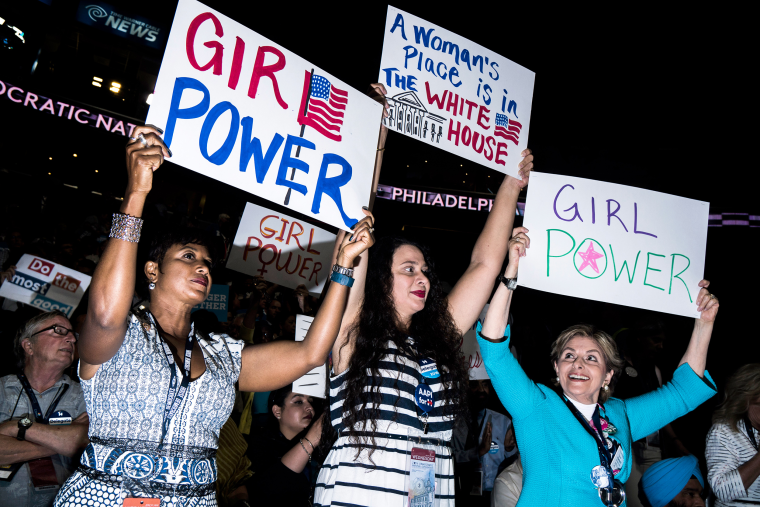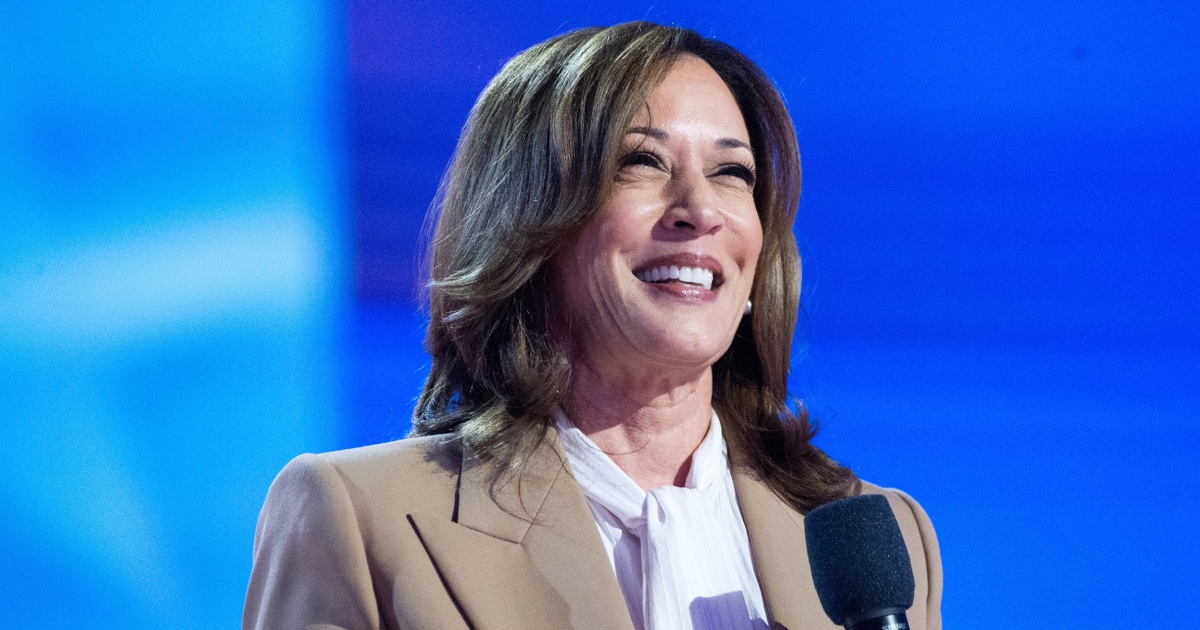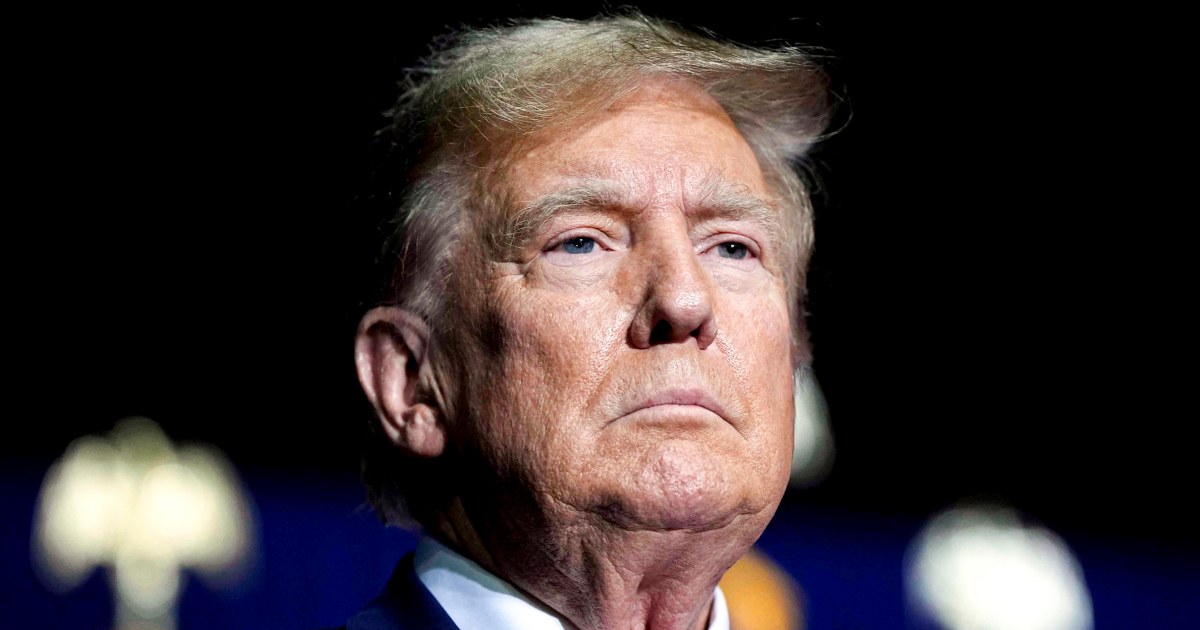CHICAGO — The delegates wore Suffragette white; Vice President Kamala Harris wore black.
Actress Eva Longoria led the crowd in a chant of “she se puede” and others speakers touted the chance to put a woman in White House, but Harris never acknowledged that she would be the first female president in American history during her acceptance speech to the Democratic National Convention Thursday.
And the word “representation” was barely uttered from the stage during all four nights the convention.
Eight years after Hillary Clinton made “I’m with her” her slogan and framed her campaign around “shattering the highest, hardest glass ceiling,” Harris has let the history-making potential of her candidacy speak for itself, following a golden rule of storytelling: Show, don’t tell.
“I don’t think she has to remind people she’s a Black woman,” said former Democratic National Committee Chairman Tom Perez, who is now a top official in President Joe Biden’s White House.
One look at Harris is all it takes to know she would be a break from 235 years of white men in the White House, party strategist say, so playing up that fact is unnecessary at a time when former President Donald Trump and his allies do plenty of that themselves by labeling Harris a “DEI hire” who has not earned her place on the ballot.
Harris becoming the first female president “brings tears to my eyes, but not votes to the ballot box,” former House Speaker Nancy Pelosi said during an event with former Obama strategist David Axelrod at at the University of Chicago this week.
“It’s icing on the cake. It ain’t the cake,” Pelosi added.
Harris is hardly hiding her gender or race and speaks often about being a woman — one of her first moves after becoming the party’s presumptive nominee was to address her Black sorority — and the need to “kick that f—ing door down” when it is not opened for women and people of color.
But she does not speak about what it would mean to have a Black woman president in her speeches or TV ads.
During the convention, the most direct emphasis on Harris’ history-making potential came from Clinton herself, the first woman ever nominated to lead a major party.
On Monday, wearing Suffragette white, Clinton placed Harris and herself in the nation’s long struggle for gender equity.
“We’ve put a lot of cracks in the highest, hardest glass ceiling. And tonight [we’re] so close to breaking through once and for all,” Clinton said. “On the other side of that glass ceiling is Kamala Harris raising her hand and taking the oath of office as our 47th President of the United States.”
In a way, Harris’ approach is actually a return to Clinton’s during her first presidential campaign in 2008, when she did not call attention to her gender (until her campaign started to sputter).
Her strategy was to portray herself as tough in order to quell voters’ latent bias against women in executive office.
When Clinton ran again in 2016, she changed course by emphasizing her gender and saying it was time to put a woman in the White House.
For Harris, toughness has also been a major theme, with the campaign foregrounding her record as a “warrior” former prosecutor who is “tough as they come,” as her husband Doug Emoff put it.
Michigan Gov. Gretchen Whitmer, who has herself cultivated an image as non-nonsense “Big Gretch,” called Harris “a leader who’s tough, tested and a total badass.”
Clinton’s 2016 loss to Trump was a crushing defeat for many women, but it also helped spark the #MeToo movement, the Women’s March and a wave of women running for office.
It helped close the imagination gap for female presidential candidates because Clinton won a majority of the popular vote. Harris hasn’t faced the same questions as Clinton did about whether Americans will vote for a woman to be president because nearly nearly 66 million Americans already did.
And 82 million Americans voted to make Harris the vice president in 2020.
Women have also been growing their ranks in other elective offices almost every election, with 25 women currently serving in the Senate, 125 in the House, and 99 in statewide executive offices, according to the Center for Women in Politics.
They’re still underrepresented in the halls of power, compared to their proportion of the overall population, but women in power are no longer a novelty.

Moreover, the electorate has shifted, thanks to Clinton, Trump and the fall of Roe v. Wade.
For instance, Donald Trump won white women in both 2016 and 2020, but polls currently show a historic gender gap between the parties since the Supreme Court’s Roe v. Wade decision, with Harris favored to win women in November.
Much of the polling bump Harris has enjoyed over Biden has come from women, who did not need her to spell out her potential “first” to rally behind her.
After the 2016 election, the Democratic National Committee conducted extensive focus-group and polling research to try to understand what happened. One key finding was that women did not really believe Democrats’ claims that Trump would be bad for women and try to overturn Roe, dismissing it as Trumpian hot air.
“The women who said that was just bluster now know that was not bluster,” said Perez.


